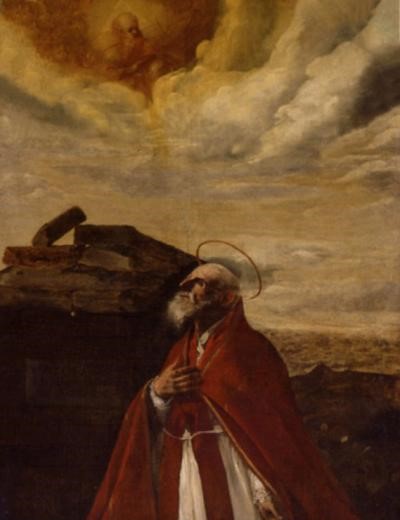
Saint of the Day for April 3: Saint Sixtus I, Pope
History of Saint Sixtus I: sextus was the son of two shepherds, originally from the 7th region of Urbe called Via Lata, near today’s Via del Corso, where a street with this name still exists. In reality, he is called ‘Xystus’, a name probably of Greek origin, which is then confused with Sextus, which is also erroneously corroborated by the fact that he will be the seventh Pope, i.e. the sixth after Peter
Sixtus I, the sixth pontificate after Peter
Elected around 115, some very important religious norms are certainly attributed to him.
It is Sixtus, for example, who decides that during the consecration, no one other than the ministers of worship may touch the sacred chalice and paten; it is also he who introduces into the Mass, after the Preface, the recitation of the ‘Holy’ in joint form between the priest and the assembly and, it seems, also the final formula of ‘Ite missa est’, although this is not historically ascertained.
Certainly, however, it states that bishops who have gone to the Holy See must return to their dioceses with a letter from the Pope proving their full communion with the successor of Peter.
It is not certain, finally, whether it was he who introduced the use of water in the Eucharistic rite and holy water for ablutions, while two letters on doctrine are attributed to him: one on the Holy Trinity, the other on the primacy of the bishop of Rome, which some, however, consider apocryphal.
During his papacy, the first clashes with the Eastern Churches probably began, while it seems that he was the one who sent the first missionaries to evangelise Gaul, including St. Peregrine.
The misunderstanding about martyrdom and relics
Sixtus died around 125, probably beheaded, and was initially indicated as a martyr.
Since no further details concerning his martyrdom are known, however, the Universal Calendar of the Church does not currently count him among the martyrs.
Initially buried in the Vatican necropolis, ten centuries after his death his remains were transported to Alatri.
Since then, the town in the Frusinate area has contended with nearby Alife – now in the Casertano area – for the patronage of Saint Sixtus I
In reality, his body, according to the latest findings, is preserved in both, but there are also relics attributable to St Sixtus I in the church of the same name on the Appian Way in Rome and even in a shrine kept in a chapel of the Cathedral of the Assumption in Savona, donated to the city by Pope Paul V.
Read Also
Gospel Of Sunday 02 April: Matthew 26, 14-27, 66
Saint Of The Day For April 2: Saint Francis Of Paola
Saint Of The Day For April 1: Saint Hugh Of Grenoble
Sister Giovanna Chemeli’s Testimony: “Spazio Spadoni… A Space For Me Too!”
Saint Of The Day For March 31: Saint Stephen Of Mar Saba
From Italy To Benin: Sister Beatrice Presents Spazio Spadoni And The Works Of Mercy
Pope Francis’ 10 Suggestions For Lent
Pope Francis’ Message For Lent 2023
Shipwreck In Cutro (Crotone), Massacre Of Migrants: Note From CEI President Card. Matteo Zuppi
Pope Francis In Africa, Mass In Congo And The Proposal Of Christians: “Boboto”, Peace
Saint Of The Day March 28: Joseph Sebastian Pelczar
Saint Of The Day On 27 March: Saint Rupert
Gospel Of Sunday 26 March: John 11, 1-45
